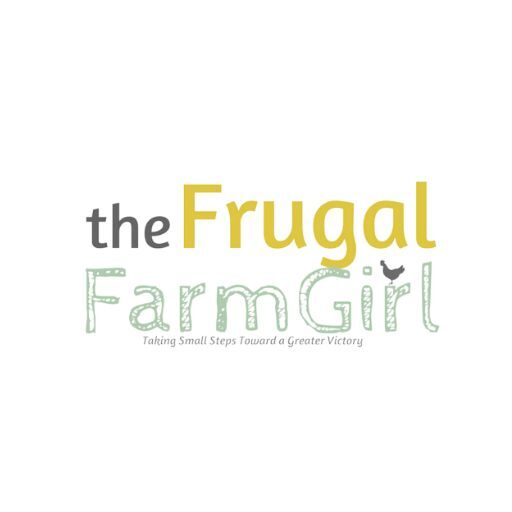Ever thought about adding some flower power to your food garden? Not only will it add some color and beauty, but it’ll also attract those buzzing buddies we call pollinators.
And let’s be honest, who wouldn’t want some adorable little bees doing some of the hard work for us? So, if you’re curious about how to create a pollinator paradise in your backyard you are in the right place.
Growing certain flowers in your yard will help with pollination, but you want to grow the right kind and avoid those that might be counterproductive.
You’ll need pollinators for foods like squash, cucumbers, and any fruit you might be growing.

*Hurry, grab a FREE pack of Pollinator Plant seeds here.
You want to encourage insects that will help the process so that while they’re gathering the nectar and pollen from one plant, they’ll deliver it to another, helping your food garden flourish.
*Read or Pin for later: How to Clear a Garden full of Weeds here.
Some flowers you can plant to ensure you attract pollinators are lavender, sunflowers, and geraniums. If you have room, you’ll want to plant these flowers along the outer edge of your garden and in and among the vegetable crops.
Let’s get to it! Below is the list of 26 pollinator plants for your vegetable garden.

Lavender
Lavender is one of my favorites to grow personally, and I wish I could have a vast field. Lavender is not only a fragrant addition to your garden, but it also attracts bees and butterflies.
Its small purple flowers bloom all summer and can be used to make sachets or essential oils. It’s a perennial that grows best in zones 5-9 and prefers full sun.
Some people alternate the rows so that one row is vegetables and the next is flowers. You don’t want to grow a flower that will tower over your vegetable crop and put it in too much shade if it needs ample sunlight.

Calendula
Next we have Calendula, also known as pot marigold. This bright orange flower not only attracts bees and butterflies, but it’s also edible!
Perfect for adding a pop of color to your salads and soups. It’s a hardy annual plant that grows best in USDA zones 3-10 and can be seeded directly in the ground.
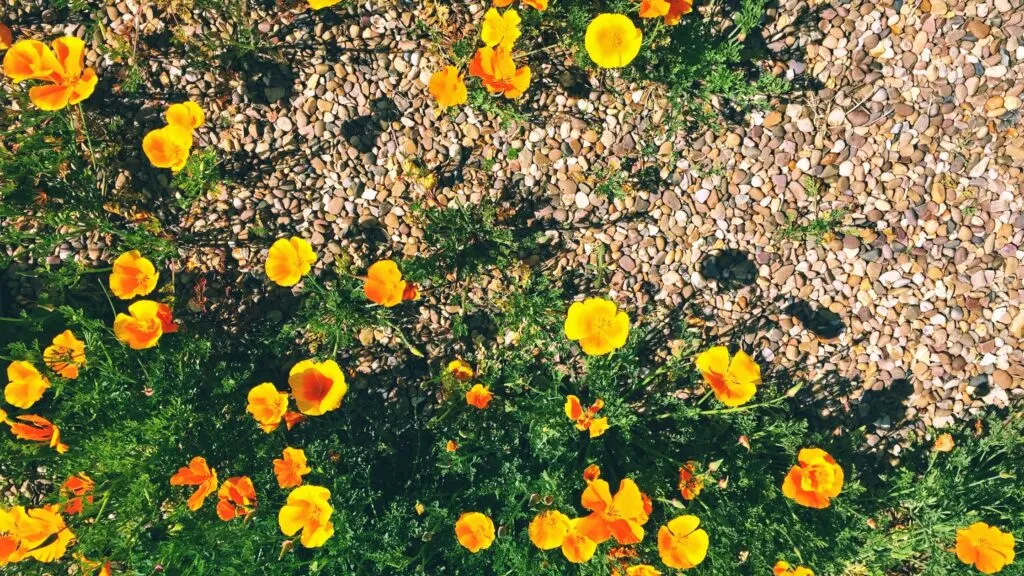
California Poppy
The California Poppy is a bright and beautiful option for attracting pollinators to your garden. They are native to the southwest United States and thrive in USDA hardiness zones 8 to 10.
These orange-colored flowers grow up to two feet tall and can be grown as an annual or perennial. To grow, plant in well-draining soil with full sun exposure.
Once established, they require very little water and maintenance.

Chamomile
Chamomile is a perfect pollinator flower for USDA hardiness zones 3 to 9. This dainty flower is a member of the good-for-you daisy family and is famous for its medicinal and calming properties.
When planted in your vegetable garden, it doubles as an attractor of pollinators, helping your plants grow.
Additionally, chamomile is easy to grow and requires relatively low maintenance. Plant it in well-draining soil with plenty of sunlight and water consistently. Trim spent flowers to encourage blooming throughout the growing season.
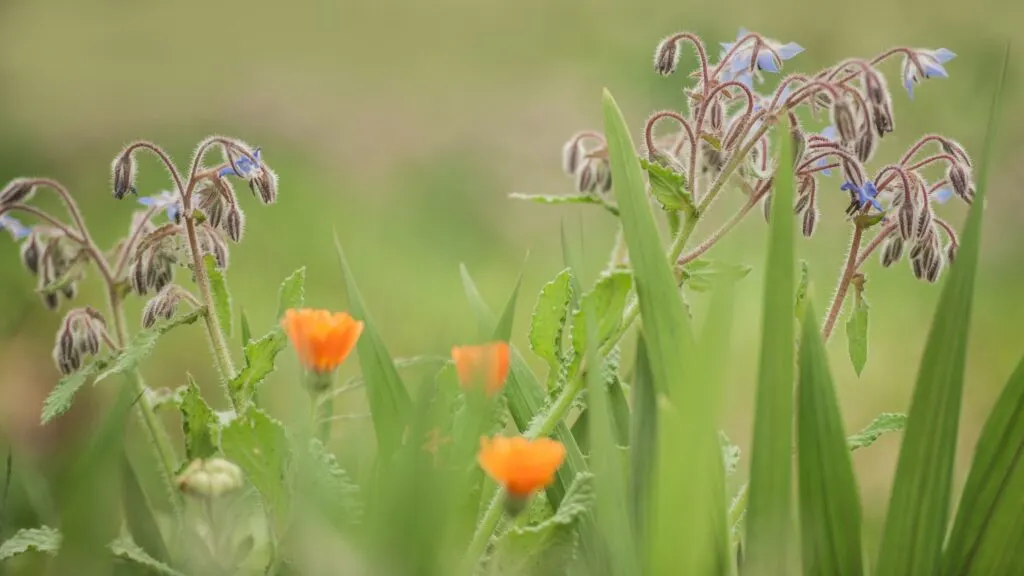
Borage
Borage is another favorite among pollinators, especially bees. Its small blue flowers bloom all season long and are perfect for garnishing drinks or salads.
It’s a self-seeding annual that grows well in zones 6-10 and prefers full sun.

Cilantro
Cilantro is not only a culinary staple, but pollinators also love it. USDA hardiness zones 3 to 11, cilantro thrives in cool weather and mainly grows in Spring-Summer.
To grow, sow in loose, well-draining soil with partial to full sunlight. Cilantro requires regular watering, small feedings, and plenty of weeding.
Once established, allow the plant to go to seed, and it will reseed itself for the next growing season.
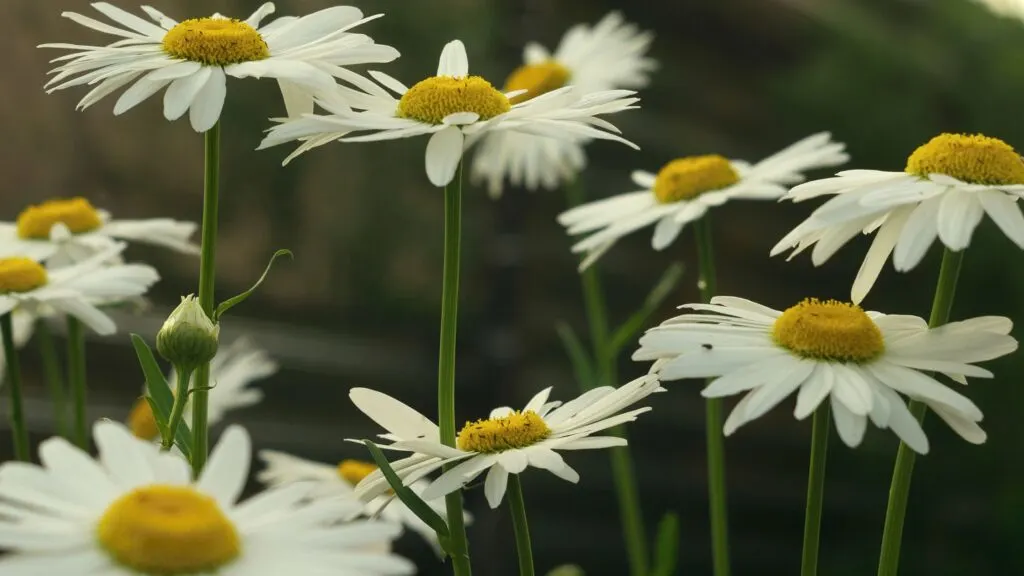
Daisy
Next, we have the classic Daisy, the Bellis perennis. This perennial plant blooms in the early spring and continues throughout the summer, attracting bees and butterflies.
It grows best in zones 4-8 and can be easily propagated from seed or division.
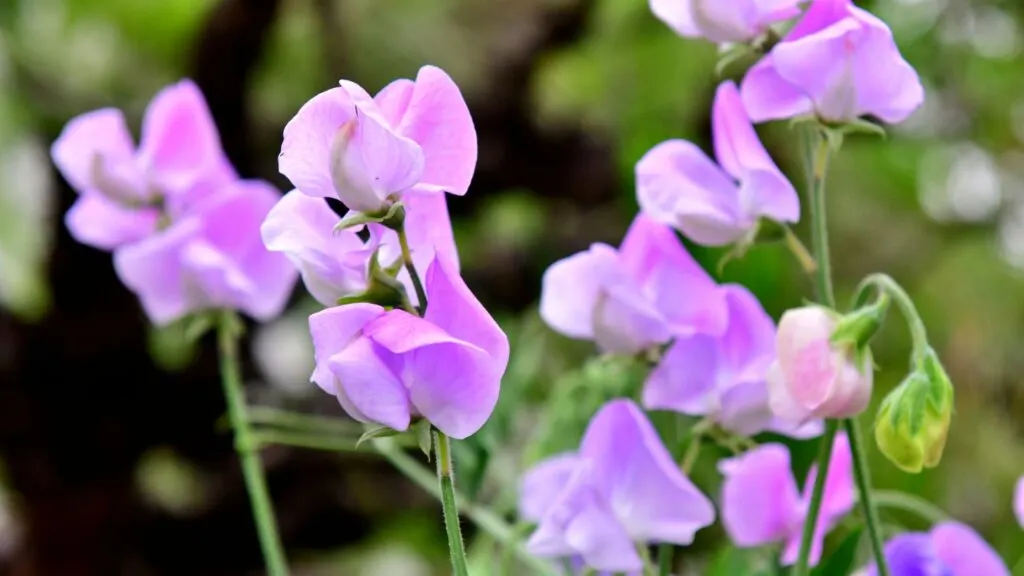
Sweet Peas
Sweet Peas are stunning, fragrant, and perfect for luring pollinators like bees and butterflies into your vegetable garden. USDA hardiness zones 3 to 9, sweet peas should be sown in the late Winter or early Spring season.
They require well-draining soil with a trellis or a fence to climb on. Sweet peas require ample water and sunlight to thrive. Remember to pinch the ends of the plant’s top to promote bushier growth and blooming.
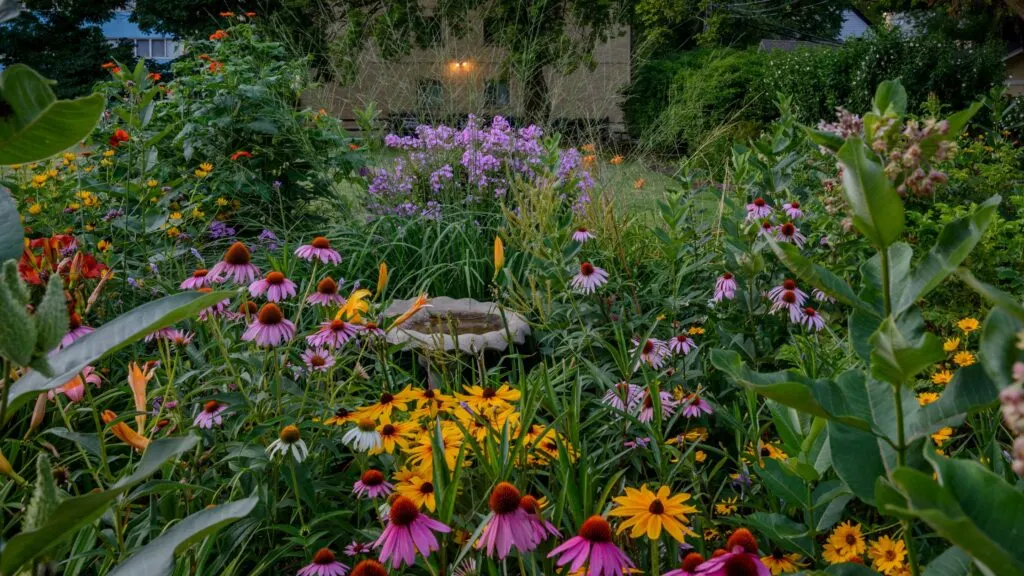
Coneflower
Coneflower, or Echinacea, is a stunning addition to your garden with its pink, purple, and white blooms and attracts bees, butterflies, and even hummingbirds.
It’s a low-maintenance perennial that grows well in zones 3-9 and prefers full sun.
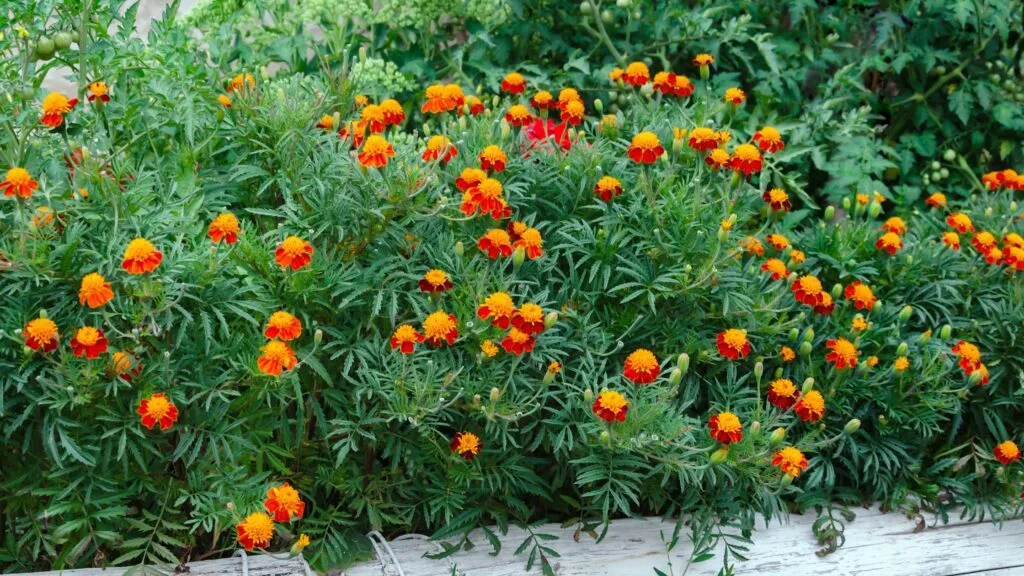
Marigolds
Marigolds are not only beautiful, but they also deter pests and attract pollinators. Their bright yellow and orange blooms are irresistible to bees and butterflies.
It’s an easy-to-grow annual that grows best in zones 2-11 and can be started from seed indoors or directly in the ground.

Nasturtium
Nasturtium is a companion plant for your vegetables and attracts aphids away from your crops and bees towards your garden. Its bright orange, yellow, and red flowers are edible and perfect for adding to salads.
It’s an annual that grows well in zones 2-11 and prefers partial shade.

Cosmos
Cosmos is a vibrant pollinator vegetable garden in bright pink, yellow, red, and white colors. Cosmos thrive in USDA hardiness zones 3 to 11 and quickly grow from seeds.
Plant cosmos in well-drained soil with plenty of sunlight and water consistently. They are so low maintenance that once they are established, they do not require much attention.
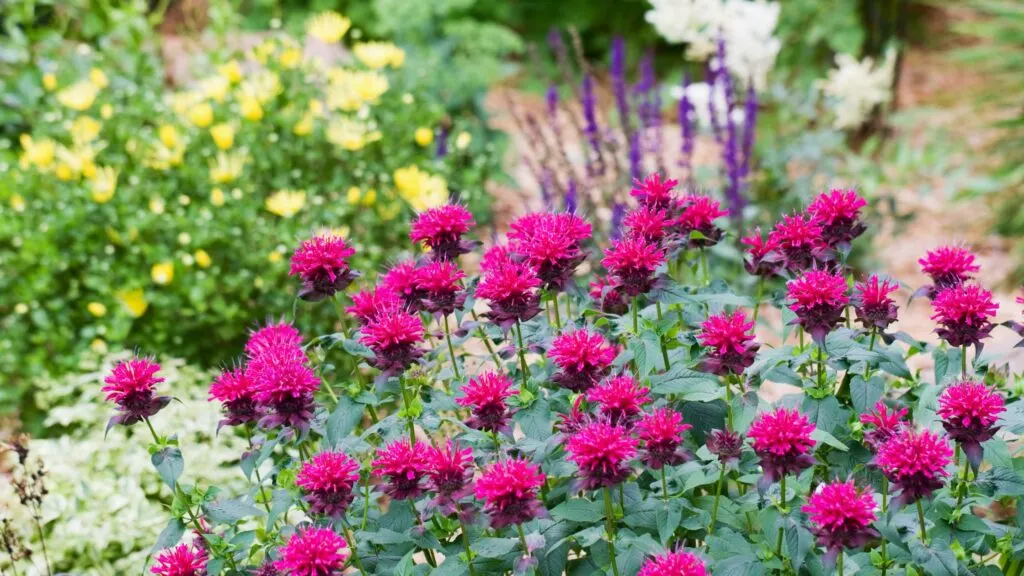
Bee Balm
Bee Balm, or Monarda, is a favorite among pollinators, including bees and butterflies. Its pink, purple, and white blooms add a pop of color to your garden and its leaves can also be used for making tea.
It’s a perennial that grows best in zones 4-9 and prefers full sun to partial shade.

Butterfly Bush
Butterfly Bush, or Buddleia, is a must-have in your garden if you want to attract butterflies. Its long spikes of pink, purple, and white blooms are irresistible to these beautiful creatures.
It’s a woody perennial that grows best in zones 5-9 and prefers full sun.
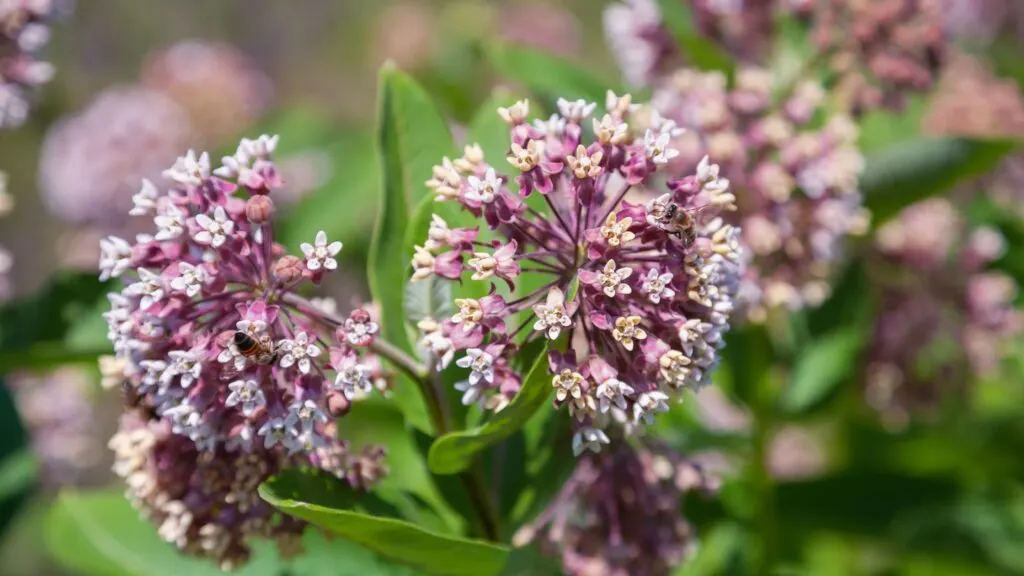
Milkweed
Milkweed is essential for attracting monarch butterflies, as it’s the only plant their larvae can feed on. Its beautiful pink and orange flowers attract monarchs and other pollinators.
It smells incredible when you have a nice patch of it growing. It’s one of my favorites when I’m out walking our property.
It’s a perennial that grows best in zones 3-9 and prefers full sun.
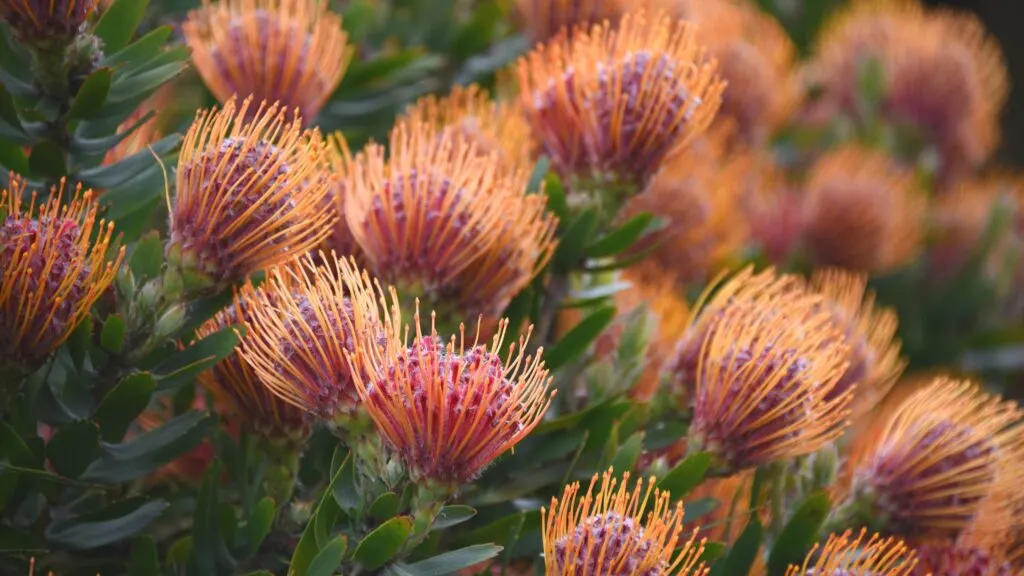
Pincushion
Pincushion, or Scabiosa, is a delicate addition to your garden with purple and white blooms. It attracts bees and butterflies and is perfect for cutting and using floral arrangements.
It’s a perennial that grows best in zones 3-9 and prefers full sun to partial shade.
Dahlias
Dahlias are a showstopper in your garden and attract bees and butterflies. Their range of colors and flower shapes make them a perfect addition to any landscape.
They’re a tender perennial that grows best in zones 8-10 and can be started from tubers or seed.

Sweet Alyssum
Sweet Alyssum is a low-growing, easy-going pollinator plant for your vitamin-rich vegetable garden. USDA hardiness zones 3 to 7 sweet alyssum is an excellent choice for container gardens, window boxes, or raised garden beds.
It can flower during the cool season and is best in full or partial sunlight.
Water consistently to help it become established, then back off watering, as too much water can dampen and cause the roots to rot.
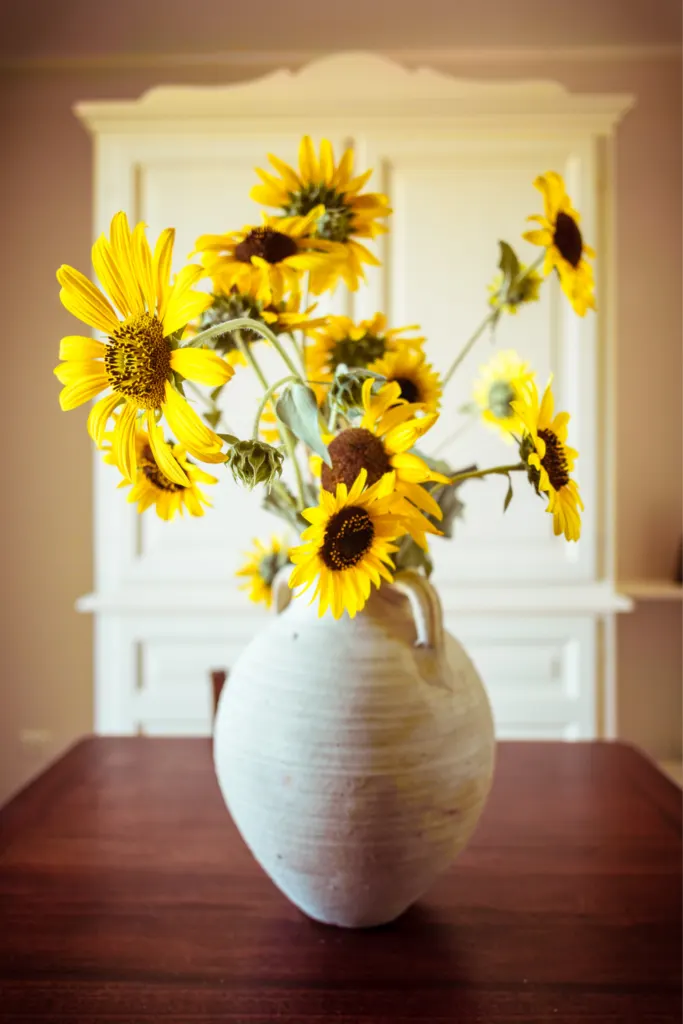
Sunflowers
Sunflowers are a favorite among everyone, including pollinators. Their large yellow flowers attract bees and butterflies, and their seeds can be roasted for a delicious snack.
They’re an annual that grows best in zones 2-11 and prefers full sun. You can directly sow these- just don’t let your chickens near them when planted.
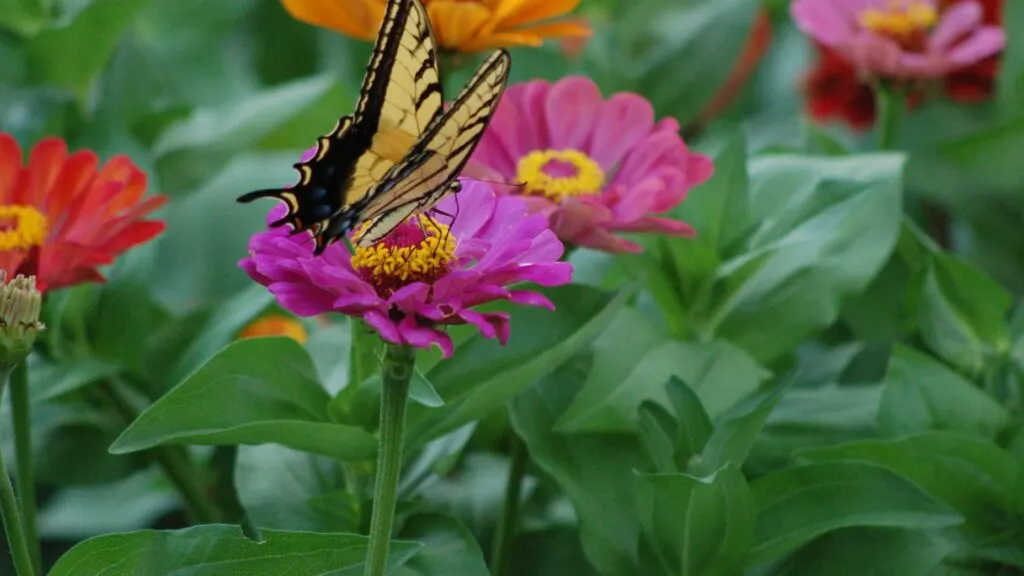
Zinnias
Zinnias are a must-have and one of my favorites in the garden if you want to attract butterflies and bees. Their bright and bold red, pink, and yellow colors add a stunning touch to any landscape.
They’re an annual that grows best in zones 2-11 and prefers full sun. I grow these from seed every year.

Aster
Aster is a late-season bloomer that attracts bees and butterflies when most other flowers fade. Its pink, purple, and white blooms are perfect for adding a pop of color to your fall garden.
It’s a perennial that grows best in zones 3-8 and prefers full sun to partial shade.
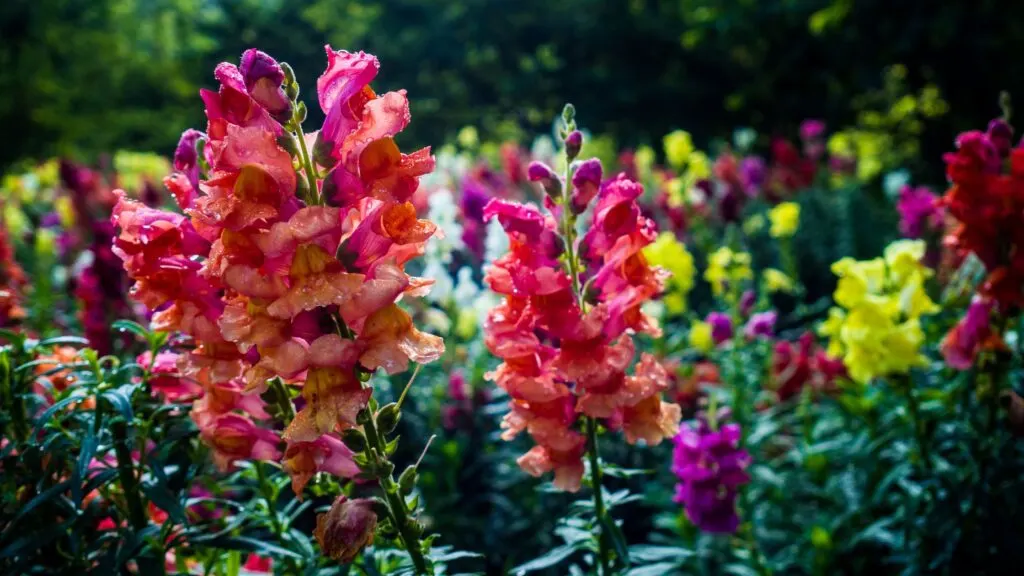
Snapdragons
Snapdragons are not only a beautiful addition to your garden with their multiple colors, but they also attract bees and butterflies.
They’re perfect for cutting and using in floral arrangements or adding to bouquets. They’re an annual that grows best in zones 7-10 and prefers full sun to partial shade.
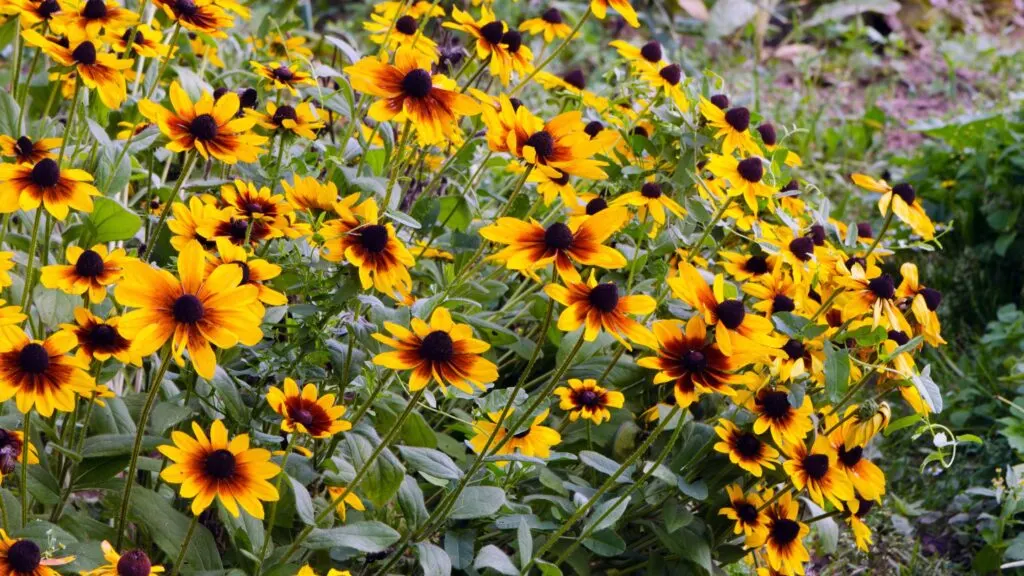
Black Eyed Susan
Black Eyed Susan, or Rudbeckia, is a favorite among pollinators, including bees, butterflies, and even hummingbirds. Its yellow and black blooms are stunning to your garden and landscape.
It’s a perennial that grows best in zones 3-9 and prefers full sun.
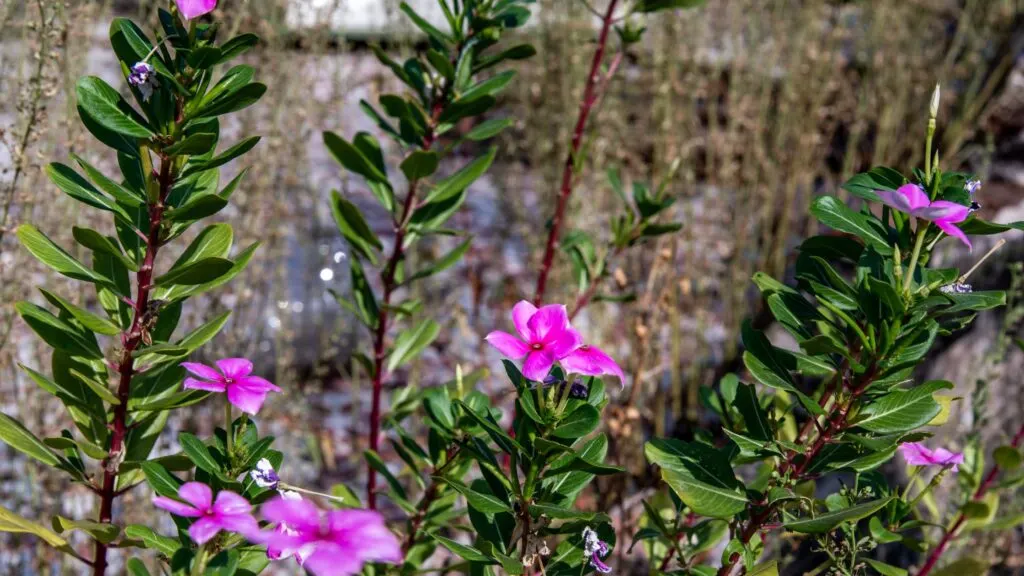
Phlox
Phlox is a fragrant addition to your garden with purple, pink, and white blooms. It attracts bees and butterflies and is perfect for cutting and using floral arrangements.
It’s a perennial that grows best in zones 4-8 and prefers full sun to partial shade.
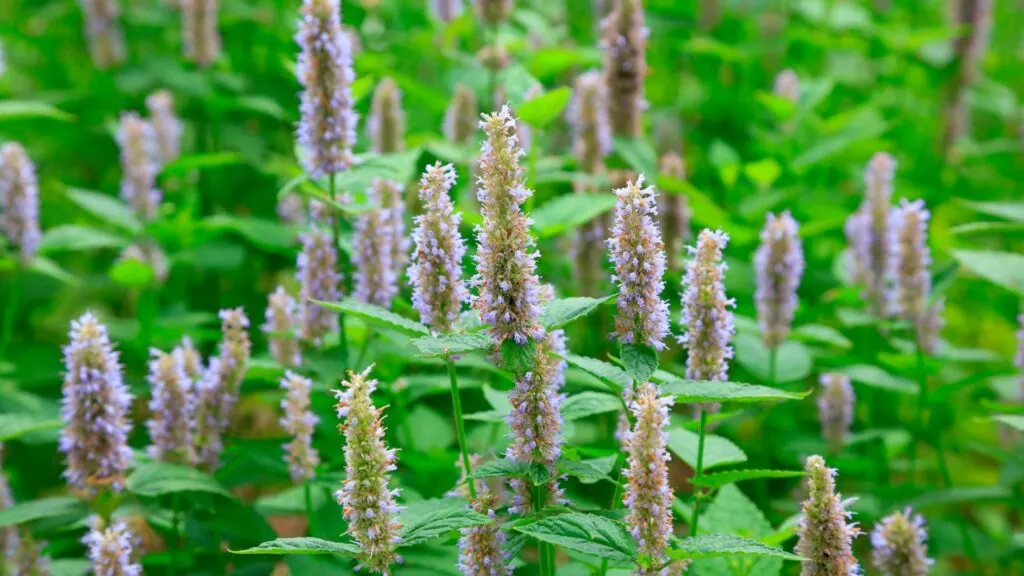
Mint
Mint is not only a yummy addition to your recipes, but it also attracts bees and butterflies. Its small purple flowers bloom all season long and its leaves can be used for making tea or adding flavor to your dishes.
It’s a perennial that grows best in zones 3-9 and prefers partial shade. Keep this one in a container- or it will take over your garden or anywhere you are planting.
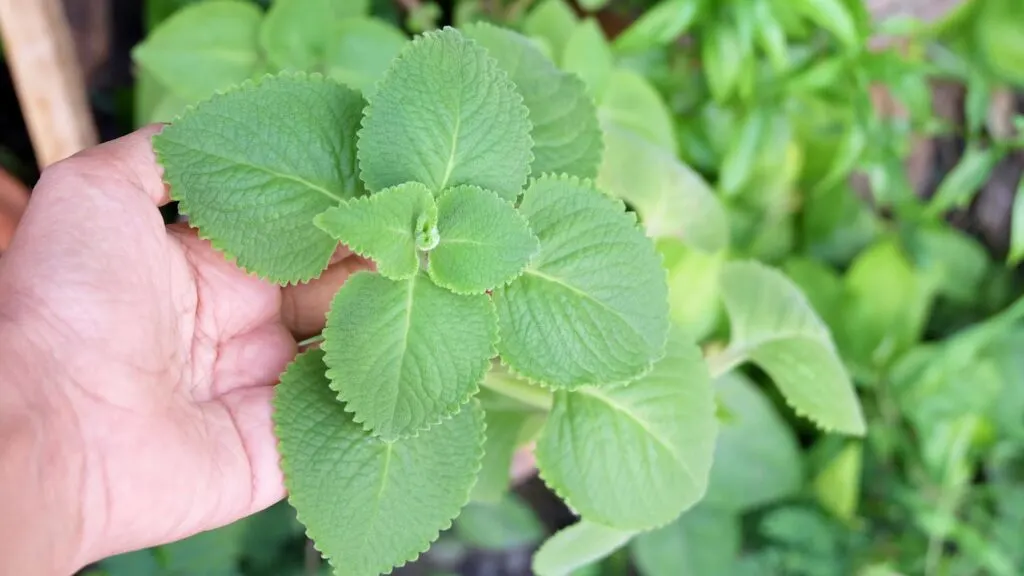
Oregano
Oregano is a favorite herb among pollinators, especially bees. Its small pink or purple flowers bloom in the late summer and its leaves can be used for cooking or making tea.
It’s a perennial that grows best in zones 5-9 and prefers full sun.

I start many of these from seeds indoors.
Read or Pin: How to Get Rid of Powdery Mildew & Mold & Prevent it here.
Remember that Plants attract not all pollinators to the same color, so it’s good to swap it around and have pinks, yellows, and other colors. You’ll soon find which pollinator likes which colors, such as bees going more to yellow while butterflies land on more reds.
Use flowering plants such as butterfly weeds and bushes, honeysuckles, and Joe-Pye weeds to get more bees, butterflies, and hummingbirds visiting your garden to help pollinate.
Avoid flowers that will repel the pollinators or turn things toxic for you. Don’t plant poisonous flowers near your vegetable garden. Oleander, for example, is a deadly flower that you don’t want anywhere near your food garden.
You can research which companion plants will help repel pests and attract more of the kinds of insects that you want to help you in your garden. Not all vegetables and plants should be grown side by side.
Growing flowers near your vegetables attracts pollinators, helps grow your plants, and adds a beautiful touch to your landscape. We hope our list of 25 pollinator plants has inspired you to add color and life to your garden.
Don’t forget to check your USDA hardiness zone and growing conditions for each plant before adding them to your garden. Happy gardening!
Let me know what you are growing in your garden this year?! Follow me on Tiktok for peeks at my garden throughout the summer.
More Gardening Tips:
- The Top Low Maintenance Shade Loving Perennials
- Top Low Maintenance Perennials That Bloom All Summer
- 13 Perennials You Should Not Cut Back in the Fall
- The Best Perennials to Plant with Tulips
- 16 Best Climbing Flowering Perennials for Your Garden
- The Perfect Easy to Grow Full Sun Low Maintenance Perennials
- A Beginner’s Guide to Planting and Growing Your Own Spring Flowers
